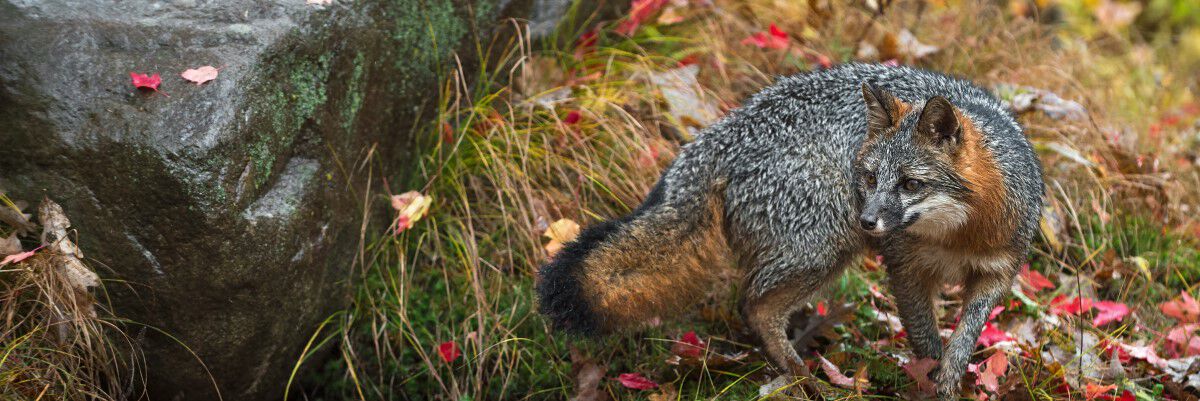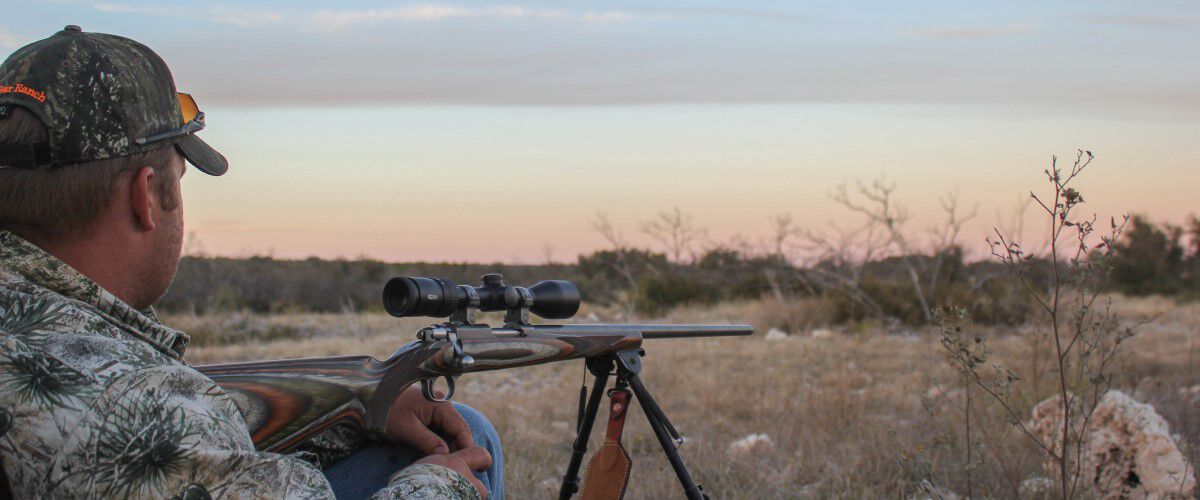Outfoxed
By Brad Fitzpatrick

The evidence pointed to a valley not far from my home. Scouting expeditions and trail camera pictures led me to believe that the area was home to several foxes, and the area seemed a favorite travel corridor and hunting grounds, as well as a territorial signpost.
Where better to set up for a hunt than on the ridge overlooking the valley? At first light I began calling, hoping to catch a roving fox returning from a night’s hunt, but as carefully as I scanned the valley I didn’t see a tail plume, an ear tip or the frenetic movement of a fox with someplace to be and something on its mind. Except for the echoes of the call, the place was dead.
Dead, that is, until I turned my head and saw a male standing 50 yards away. He’d come to check out the sounds that indicated a free meal, but he’d swung a wide loop upwind and was working his way toward me when I moved. And that did it. All I saw was a rust-colored tail bouncing away into the brush in the dim light of early morning.
Fox Facts
The two most common foxes hunted in the Americas are the red fox (Vulpes vulpes) and the gray fox (Urocyon cinereoargenteus). The red fox is more widely distributed and occurs across the northern hemisphere, including most of the United States, as well as in Australia, where it is an invasive species. Gray foxes appear in America from the southern border all the way to the Upper Midwest and New England. In some places, the ranges of these animals overlap and they act as competing species. Both raise their kits in dens, but only the gray fox is capable of climbing trees.
Interestingly, it’s easy to distinguish a red fox skull from that of a gray fox: the red fox has a sagittal crest (line of bone on top of the skull) that forms a V, the first letter as their genus (Vulpes). The gray fox crest is U-shaped, which conveniently matches the first letter of its genus name (Urocyon).

Foxes rank among the most intelligent of all North American wild game, and hunting them can be a challenge. Here are some tips that will help you find more foxes this year.
Scouting: As with any other animal, scouting is key. These animals spend most of their time in their den, patrolling territory, and hunting or searching for caches (stored food), so look for trails that lead to and from denning areas, scat, kills, tracks and fresh urine in snow. It’s also important to match fox behavior with appropriate calls. For instance, if you know foxes are scent-marking a particular area, then a three-part contact call (three sharp wows in succession) might be effective. In fields where foxes frequently hunt, as evidenced by kills or tracks, you might consider a distress call instead.
Key In On Coyotes: Coyotes are a key competitor for both fox species. As such, coyotes will kill foxes to reduce competition. Foxes know this, and they go out of their way to avoid their larger canid cousins. Studies have shown that gray foxes, in particular, adjust their ranges to avoid areas where they are most likely to run into coyotes (red foxes also seem to avoid them, but not to the degree of the gray fox). So, while you’re scouting for foxes keep watch for coyotes.
Call Selection: In unpressured areas with lots of foxes, just about any call will work, but if you’re hunting dogs that have been pressured, you’ll need to use a bit of finesse. I prefer to set up for calling where the fox is likely hunting in or along dense thickets. That will prompt the fox to keep moving as it searches for the source of the sound (and offers me a chance for a shot). I also like subtle calls, although I’ve seen west Texas gray fox come charging full-tilt toward very loud rabbit calls even when the animals were at close range. Woodpecker distress calls work well, but my favorite is a mouse distress squeak. Foxes seem to be born with an inherited knowledge of what that sound represents, and even pressured dogs will respond if your calling is subtle. Give five sharp squeaks and then a few drawn out ones, wait a few minutes, and call again.

Leave Nothing to Chance: Why did I get busted by that red fox in the valley? Simple: I wasn’t respectful of this sharp-eyed predator’s cunning nature. Oftentimes foxes circle upwind if they can just like a coyote, so position yourself so that doing so would require the animal to walk across open ground. Camo is important but breaking up your outline and remaining still are more critical. A fox is tuned in to small movements (they make a living hunting mice and voles in grass fields, after all) so any motion will catch their attention. I prefer movement decoys because they reduce the odds that a predator will see my movements as they come into the set.
The Right Gear: I prefer to hunt foxes with a .17 or .22 caliber rifle, and these animals don’t take much killing. In most cases, a rimfire will do the trick, particularly in areas where there’s ample cover to allow the fox to get close. My gun of choice is a 17 HMR bolt-action rifle firing CCI Gamepoint. The bullet has plenty of power to stop a fox, and the Dimple-Tip doesn’t damage hides excessively. I also prefer to hunt with a suppressor, both for my own benefit and to improve the odds of taking multiple animals on a single set.
Good camo clothing is essential, as is a cushion or some other seat: You don’t want to fidget and scare game. I prefer a low-power variable scope such as a 1-8x, which offers plenty of magnification for long shots but a wide field of view in dense cover.
These tips will help you as you plan your next fox hunt, but there’s nothing easy about tagging these clever critters. Perhaps that’s what’s so addictive about them. Sooner or later they’ll likely outwit—or perhaps outfox—you, and it’s that challenge that makes hunting them so much fun.
Gamepoint
This bullet’s Dimple Tip design allows it to expand like a big game bullet for maximum energy transfer while minimizing hide damage.
Buy Now